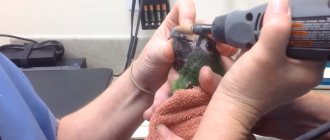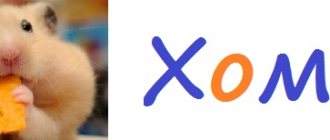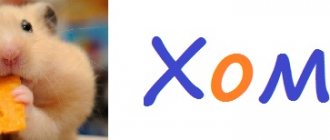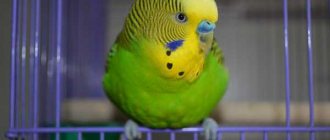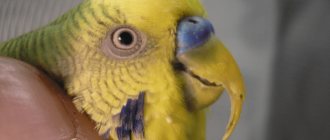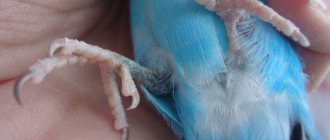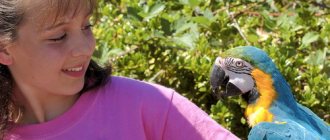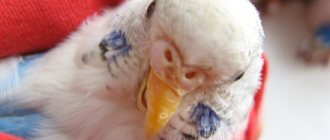Reasons why a parrot foams from its beak
Unfortunately, there is little information about diseases in birds, but there are diseases that can be transmitted to humans. Therefore, every bird owner should know as much as possible about it.
If you notice any concerning symptoms in your pet, be sure to contact your veterinarian. Working together will help him much more effectively than trying to do it on his own.
There are two common causes for a budgie, cockatiel, cockatoo, or any other parrot:
Both vomiting and foam in a feathered parrot are a defensive reaction. Poisoning can occur as a result of:
In some cases, parrot foam is a reaction to poor quality food.
If a bird has been fed one brand of food for a long time and then suddenly switches to another brand, the animal may also react with an eating disorder.
Another reason for foaming at the mouth is infection. Associated symptoms are loose stools and refusal to eat.
Diseases
Trichomoniasis in parrots is a disease caused by Trichomonas bacteria. Affects the mucous membranes of the liver, lungs and gastrointestinal tract. It is not contagious to people.
In birds, saliva and food debris accumulate in the crop, which leads to its swelling. This causes the parrot to secrete foam, which colors the plumage of its beak. The bird may vomit, it loses weight, the droppings become liquid, sometimes black from particles of undigested food.
Goiter is a serious disease that at first glance looks like symptoms of poisoning or a cold. If treatment is not carried out in time, the bird may die.
Causes of nodular goiter:
It happens that a parrot’s pouch becomes clogged with food due to a monotonous diet and lack of essential minerals, leading to inflammation. A large amount of food, remaining in the crop for a long time, is mixed with saliva and swells. During a goiter, muscles stop working properly. Due to the resulting hyperemia, it becomes inflamed, which is gradually accompanied by infections. All this leads to a rapid deterioration in the bird’s condition.
Diseases of budgies.
With proper care and good care, a budgie can live 15 years or more.
The most important thing in keeping is proper feeding and care. The food should contain enough nutrients and minerals for the life of your pet. Always clean water, a clean cage, complete food, necessary supplements, always organic and inorganic sand, which birds need for normal digestion. If you just buy millet and oats, then unfortunately, this will not be enough for the parrot. Pet stores offer quite a lot of food mixtures. Additives: greens, shoots of oats, wheat, millet, corn. You can buy it, you can grow it in a balcony box, in a flower pot. Cereals grow in 2 weeks, shoots are 8-15 cm.
Prevention of diseases in budgies is easier and simpler than the treatment itself. Proper maintenance and feeding of a budgie is the key to the bird’s health. Treating a parrot is difficult.
Appearance and behavior are indicators of a parrot's health. The most typical manifestations of illness and poor health of a parrot include:
— The parrot sleeps almost all the time, does not look after its plumage, and does not play.
- Wasting: can be identified by the protruding keel. If the bird is severely emaciated, then before the specialist arrives, it needs to be provided with additional nutrition and warmth.
— The bird is breathing heavily or sniffling, but the bird may look almost healthy. As a rule, in birds the disease has already become chronic, and it requires a more detailed examination to prescribe treatment. Discharge of mucus from the nasal passages and sneezing.
— The bird is sitting on a perch, the tail is directed perpendicular to the floor - an alarming symptom that indicates possible problems with the lungs.
— The parrot drinks a lot of water - a symptom that indicates problems with the gastrointestinal tract and kidneys. Additional research includes droppings for bacterial culture.
- Growths on the paws, as well as inflamed joints, wounds and redness. There may be a mite or bacterial infection.
Diseases of budgies
Goiter inflammation
Reasons: feeding the parrot low-quality grain and easily fermented food, poisoning by poisonous plants or inhalation of toxic substances (smoke, paint),
monotonous feeding, infectious diseases, diseases of the pulmonary system and complications after them, not clean water for drinking.
Symptoms of the disease: regurgitation of food from the crop sac several times a day, while the parrot does this with noticeable difficulty (do not confuse the element of mating regurgitation of food by males during the courtship period), lethargy, refusal to feed: the bird is hungry, but cannot eat when viewed from the outside there is an increase in the crop, possibly with a shift to the side, the walls of the crop sac are dense and elastic, filled with food or liquid, an unpleasant putrefactive odor may be released from the beak.
Inflammation of the goiter, as a rule, very quickly leads to the death of the parrot if measures are not taken in time. The use of antibiotics is permissible only in the event of a disease caused by a number of pathogenic microorganisms, and for this it is necessary to carry out the necessary examinations. Treatment is accompanied by the use of homeopathic medicines with the use of karsil (to maintain liver function) and the fight against the phenomena of increasing exhaustion, since the bird cannot eat for quite a long time. If the goiter is inflamed, it is washed with a 5% soda solution and a 3% boric acid solution. A decoction of flaxseed (0.5 ml) and horse gastric juice (10 drops) are injected into the goiter. They monitor the freshness of soft food; in summer, soft food is offered to birds 2-3 times a day.
Down-eaters
Symptoms: the parrot behaves restlessly, scratches nervously, shakes itself frequently, sleeps and eats poorly. The plumage turns from smooth and shiny to ruffled and matte. In some places, mainly under the wings, on the stomach, on the head, bare spots form, often covered with crust (scabs).
Down feather eaters look like small, dark, oblong lines on a bird's feather, 1.5-2 mm long. They are often visible to the naked eye, but it is more convenient to examine the bird for the presence of these quickly scurrying parasites using a magnifying glass in the part of the plumage located above the wax.
In a budgerigar affected by down feather eaters, the feathers look as if they have been cut or stitched when the feather is held up to the light.
The development cycle of the parasite is about 3-4 weeks. Lice beetles attach to a parrot's feather and move with the help of hairs and bristles. The parasites live on the feather cover for several months, feeding on the feather barbs and skin epithelium. The difficulties in the fight against ectoparasites of birds lie in the fact that, having a very small size and weight, the bird reacts very hard to various types of insecticidal preparations and often dies if the appropriate dosage is not observed.
Parrot has a cold
A bird that has a cold is inactive, sleepy, unkempt, often sneezes (there may be nasal discharge), often scratches the wax or eyes, trembles, and may refuse to drink or eat. The mucous membrane of the nose and oral cavity is inflamed red, the bird may swallow frequently, breathe heavily (visible by moving the tail in time with breathing), and regurgitation of wet grain may be observed due to irritation of the inflamed mucosa.
Birds are very sensitive to drafts, sudden temperature changes, and cold water in a drinking bowl or bathing bowl. Sick birds lose heat very quickly. The bird is shaking all over and should be warmed. To do this, place a regular 60-watt table lamp (preferably red) at a distance of 20-30 cm above the place where the bird usually sits. Darken half of the cage with thick fabric so that the bird has the opportunity to go into the shade if it gets hot (overheating is undesirable, as it has its consequences). You can heat for 3-5 hours a day (depending on the bird’s reaction to the lamp), dosing the heat by turning on the lamp for an hour.
An infusion of chamomile is poured into the drinking bowl; you can add a drop of lemon and honey - this will help maintain strength.
For a severe cold (with cough, severe sneezing, nasal discharge and heavy breathing), inhalations are given. To do this, use chamomile, menthol oil, eucalyptus or regular “Star” balm. 1 tbsp. chamomiles are poured with a glass of boiling water; 0.5 ml of oils are added to a 100 ml bowl and filled 2/3 with boiling water; placed next to the cage and covered all together loosely with thick cloth. The “Star” balm in the form of a pencil can simply be placed between the bars of the cage next to the bird. Inhalations are carried out 1-2 times a day for 15-30 minutes over a course of 4-5 days. Be sure to watch the bird during inhalations: if you see that your pet is breathing heavily, has its wings spread wide and its eyes half-closed, reduce the inhalation time and open the fabric covering the cage a little more.
A decoction of rose hips is used as a source of vitamin C for colds and in the off-season to increase the defenses of the budgie's body. Like all decoctions, it is changed 3-4 times a day, replaced with water at night and stored in the refrigerator for no more than 3 days. For colds, you can add a few drops of honey to the broth until it has a faint sweetish taste.
These procedures are carried out as first aid for the bird, and in the future you should consult a doctor.
Parrot poisoning
Symptoms of poisoning:
- vomiting (possibly foam from the beak)
- the presence of undigested grain in the droppings
- liquid droppings
- general bird malaise
- food refusal
Most often, poisoning occurs due to poor-quality food, bad water, expired treats (for example, cereals), violation of the technique of germination of food, inclusion of prohibited foods in the diet, as a result of the bird eating a number of indoor plants, newspapers or other colored paper, which are often used in as bedding. There are also frequent cases of metal poisoning when the cage cover is damaged when the parrot licks these places.
If food poisoning is suspected, the first step is to give the bird an absorbent to reduce the level of toxins in the body. As an absorbent you can use: smecta, polyphepan, filtrum, enterodes, enterosgel or simple activated or charcoal.
The coal tablet should be crushed into powder and one half should be sprinkled on the moistened food, and the other half of the powder should be added to the drinking bowl. If there really was food poisoning, an improvement in the condition when using the absorbent is observed within 1-2 days. It makes no sense to give activated carbon for more than 3 days - this means the cause of vomiting or liquid droppings lies deeper.
Since it is often necessary to forcibly give an absorbent, a crushed coal tablet is mixed with a small amount of water and, using a pipette or syringe without a needle, instilled into the bird’s beak in a side slit in an amount of 0.2-0.5 ml.
Other absorbents are diluted with twice as much water as required by the instructions, and the resulting solution is injected into the bird’s beak in an amount of 0.2-0.5 ml. If you use Enterosgel, then you should dispense 4-5 mm of gel, dilute it slightly with water and put 0.2-0.5 ml of the resulting solution into the beak.
Remember that it makes no sense to give the absorbent in parallel with other medications/drugs - you need to make a temporary interval.
Also, in case of poisoning, chamomile decoction, diluted 1 to 1 with water, is added to the drinking bowl.
The described actions are only first aid for your pet until you contact a veterinarian. It is necessary to try to find out the cause of the poisoning in order to eliminate it and avoid similar situations in the future.
Avitaminosis
With vitamin deficiencies, parrots experience swelling and redness of the eyelids, mucous membranes of the eyes, general weakness, possibly throwing the head back, trembling of the limbs, and in advanced cases, convulsions may occur. The chicks are retarded in growth and development, their fingers are curled, anemia is noted, and poor egg fertility is possible, including delayed development of the embryo in the egg.
This disease manifests itself when a parrot is fed monotonous food, poor in vitamins, or a grain mixture of any one type. Vitamin deficiencies can be companions to other diseases. Chicks especially often suffer from a lack of vitamin D. They develop rickets, their appetite decreases, and their plumage becomes ruffled and dull. Chicks that have recovered from the disease remain underdeveloped for the rest of their lives and are not suitable for further breeding.
Treatment of mites (knemidocoptic mange)
A disease caused by small mites of the species Knemidocoptes, tiny relatives of the spider. The mite settles in the upper layers of the epidermis of the parrot's skin, spreading around the eyes, cere, beak, cloaca and paws of the bird. The scabies mite causes severe itching in the parrot and forms spongy growths on the bird's face and paws.
The source of scabies mites can be a poor-quality grain mixture, cage accessories that have not undergone pre-treatment after purchase, or branches and greenery brought from the street, as well as the parasite that was initially present in the bird in a latent form.
Characteristic symptoms of this disease: the first spongy growths of grayish-cream or yellow color appear in the wax region, while the bird is constantly itching. Further development of the disease is accompanied by the appearance of growths on the paws, in the cloaca area and around the eyes. If the disease is neglected, irreversible deformation of the beak is possible, disrupting the feeding process (inability to grasp grain with the beak) and ultimately leading to the death of the parrot.
The mite infects birds with a weakened immune system, because With good immunity, the bird’s body is able to cope with this disease on its own. The mite can be present for a long time in a latent form, manifesting itself in stressful conditions for the bird (for example, with vitamin deficiency, malnutrition, against the background of other diseases or after them, with a long-term violation of the light regime, etc.).
Tick treatment. Veterinary pharmacies and pet stores have a fairly large selection of products to combat parasites in general and ticks in particular. However, be careful when choosing, since many drugs are toxic to birds and can cause allergic reactions or poisoning.
During illness, flights outside the cage are prohibited to avoid spreading the parasite and re-infecting the bird. In addition, if the parrot is in a pair, then it is separated from a healthy bird (or birds) in a separate quarantine cage until complete recovery. At the same time, it is worth observing the other birds in case they have become infected.
Before and after the course of treatment, the cage is thoroughly completely disinfected. In this case, you should throw away all wooden accessories of the cage, such as perches, ladders, swings (if you do not want to repeatedly boil them before treating these items with a disinfectant), as well as crayons, sepia, mineral stones - anything that may contain tick eggs and parasites themselves.
Coccidiosis
When the disease occurs, a general depressed state of the parrot is observed, ruffled plumage, thirst, poor appetite, the bird loses weight, then diarrhea occurs, often mixed with blood, vomiting and the bird dies from exhaustion and dehydration.
This disease is severe in chicks that do not yet have immunity to this disease. Damage to the intestines by this type of pathogen causes symptoms of acute enteritis (diarrhea with blood), body temperature rises, and convulsions occur.
Two subgroups of eimeriostatics are used to treat coccidosis.
Eimeriostatics are a group of drugs, antibiotics, prescribed to suppress the vital activity of eimeria (protozoa that cause coccidosis).
The first subgroup includes drugs given to prevent the occurrence of this disease, in the event that an already sick bird is identified to prevent the disease in others.
In this case, the drug Amprolium is used. The drug mixes well with feed, does not cause side effects, and is compatible with minerals, vitamins, antibiotics and other feed components. Absolutely harmless. Mixed in a proportion of 5 grams per 1 kg. grain mixtures.
In case of already established coccidosis, drugs are used (2nd group): Baycox, Madicox.
In each specific case, the drug is prescribed after the necessary laboratory tests.
The parrot has namins. Pododermatitis.
Budgerigars live on branches of trees and shrubs, which vary in thickness and smoothness. These factors contribute to the massage of the soles of the paws and serve as a kind of “simulator” for the parrots’ paws.
At home, budgies spend most of the day in cages; some of them have a sedentary lifestyle. In this regard, if the thickness and material of the perches are chosen incorrectly (too thick or thin; plastic, not wood), the birds will have problems with the soles of their feet.
The development of the disease is also facilitated by a general weakening of the body against the background of chronic diseases and improper maintenance, excess weight of the bird, and keeping the cage in unsanitary conditions.
Signs of pododermatitis in a parrot
The first signs of inflammation are quite difficult to notice. Therefore, when examining a bird, you need to pay attention to the condition of the skin on the soles of its feet. It all starts with redness, and over time, ulcers and calluses form on the skin. The bird begins to frequently raise its sore leg, the leg becomes hot to the touch, and sometimes the skin may swell. The parrot often fiddles with its paw and chews it, which indicates that the paw is bothering the bird. If help is not provided at this stage of the disease, open ulcers will form in which pus accumulates. The bird constantly fiddles with its paw, which worsens its condition. In very advanced cases, the parrot cannot stand on its legs; they become swollen and covered with ulcers, from which purulent discharge comes out.
In order to prevent such problems from happening to the bird, it is necessary to follow some rules for keeping it:
The size of the cage must be sufficient for the bird to move freely on its perches.
The cage must be made of wood (an option is a purchased perch or a natural one made from tree branches allowed for birds, well washed and doused with boiling water for disinfection)
The size of the perches must meet the requirements (12-15 mm in diameter)
Under no circumstances should you place one perch in a cage - at least there should be two of them
Swings and ladders may differ slightly in diameter if this is not a permanent place where the bird sits
It is necessary to let the bird out of the cage whenever possible, but as often as possible
The cage must be kept clean; all perches and other accessories are washed as they become dirty at least once a week.
The parrot's diet should be varied and include vegetables, fruits, and green leaves from the list of permitted ones.
Treatment of namins
To relieve swelling, inflammation and possible suppuration due to the appearance of redness, calluses and pain (as evidenced by the fact that the bird often raises its paw and also rubs it with its beak), it is recommended to give birds soda baths or lotions at home.
Soda helps soften tissues and remove purulent formations from them. This can be done if there is no violation of the skin of the paw.
Soda baths
Soda baths: 1.5 teaspoons of soda are dissolved in a glass of warm water (about 40 degrees). The bird's paws are dipped into a bowl with this solution for 7-10 minutes (the procedure is repeated as often as possible). This must be done in such a way as not to wet the plumage and so that the bird does not drink the soda solution. Soaked feathers are wiped with a cotton swab moistened with clean water. The course of treatment is 1 week.
Soda lotions
If the bird is tame, the procedures can be done right in the cage, when the parrot is sitting on a perch. Make a cotton swab from a match or stick, moisten it in a soda solution and wet the paw with it for 7-10 minutes so that the remainder of the solution drips onto the tray. If the bird moves along the perch left and right, this will be a kind of massage for the skin of the feet, which is very desirable for this disease.
After the procedure, the perch, tray and feathers soaked in soda solution are wiped with clean water.
In parallel with soda procedures, an oil solution of vitamin A (retinol) is used to lubricate the skin of the paws once a day, as well as, as prescribed by a doctor, hydrocortisone (eye) ointment, levomekol ointment, travmatin
(traumagel) or traumeel.
A parrot's diet must include a vitamin complex, which includes vitamin A.
In severe, advanced cases, examination by a specialist is necessary, as surgical intervention may be necessary.
If necessary, the perches are wrapped with soft materials, the feeder and drinker are placed in a place easily accessible to the birds. If the bird cannot be on the perch, but sits on the bottom of the cage, soft napkins are placed on it. In such cases, you should not pour sand onto the tray so that it does not get into the wounds.
Psittacosis (Ornithosis)
The disease is caused by chlamydobacteria, which were previously considered viruses. Psittacosis is a widespread disease among different species of birds, wild and domestic. The term psittacosis is applied to parrots (from the Latin psittacus - parrot). The first cases of the disease arising from infection from a parrot were described in 1876 by T. Jurgensen. Parrots can become infected by carrying the infection from a sick bird or by being in a contaminated environment in which a sick bird lived. The disease is also transmitted through the droppings of sick birds and occurs in a very severe form. The disease begins with the parrot becoming sleepy, lethargic, and refusing to eat. Its feathers become rough and quickly fall off, and severe and extremely foul diarrhea begins.
Symptoms: swelling of the connective membrane of the eyes, copious discharge from the cloaca, sometimes a severe runny nose, loss of appetite and a catastrophic loss of strength. Birds often die. Birds that survive this stage of the disease become chronically ill, and at the slightest overload or stressful situation, overheating, or a cold, the disease worsens. In medical practice, antibiotics of the tetracycline and erythromycin group are used under the supervision of a veterinarian. The disease is more likely when birds are overcrowded, in flocks, on farms, lack of hygiene, or unsanitary conditions. Disease prevention is compliance with all sanitary standards for keeping birds.
Psittacosis is an infectious disease that is transmitted from birds to humans. People who are constantly in contact with birds, workers in poultry factories and farms are at risk of the disease. The source of infection, the carrier, can be ducks, turkeys, and, to a greater extent, pigeons. In most cases, infection occurs aerogenically (airborne dust) - by inhaling dust containing chlamydia (dried particles of bird feces, as well as beak discharge, contaminated fluff particles).
Salmonellosis
Salmonellosis is a disease that often occurs in flocks of budgerigars. The causative agent is Escherichia coli bacteria - Salmonella. Birds become infected from one another through contaminated excretions of sick birds, as well as through contaminated food and drinking water. The source of infection may be feed; a sick bird that excretes a pathogen in its droppings, contaminating the litter and water; a monotonous, inadequate diet can activate a latent infection and lead to an acute form of the disease. The disease progresses very quickly, and the bird dies due to dehydration due to severe diarrhea. If the disease becomes chronic, the main symptoms are swelling of the joints and muscles, growth inhibition, general weakness, drowsiness, and lethargy. Parrots chronically sick with salmonellosis become carriers of the disease. Outbreaks of the disease are most severe in poultry during juvenile and seasonal molting. After a short incubation period (3-4 days), the sick bird develops lethargy, depression, fever, and intestinal upset. Often, during an acute infection, blueness of the beak and paws occurs, which indicates sepsis. The stools are liquid, orange-green in color, sometimes with blood. In the chronic course, yellowness of the mucous membranes, exhaustion of the bird, and sometimes vitelline peritonitis are noted; clinical signs are not expressed and occur in the form of depression, apathy, arthritis, intestinal disorders, and conjunctivitis. Sometimes paralysis of the wings and legs occurs.
Embryos developing in infected eggs usually die.
Infection is detected by bacteriological testing of droppings or by autopsy of the bird after death. Since there is a possibility of the disease being transferred to humans, treatment must be carried out in strict accordance with the measures provided for by veterinary instructions, under the control and supervision of a doctor. Prevention of disease - compliance with hygiene and sanitary standards for keeping birds.
How to help a parrot
If you notice foam coming out of your budgerigar's beak, you need to find the cause. In case of poisoning, the following actions should be taken:
Warning. If a parrot is gassed or poisoned through the skin, sorbents will not help it. It is necessary to take special medications.
If your pet is diagnosed with trichomoniasis, it will be necessary to administer antiparasitic drugs prescribed by a doctor (this may be Trichopolum or Iodinol). You should also improve the quality of food for the frilled parrot, start feeding it rice water (it will soften the mucous membranes) and disinfect the cage with all its contents.
If a parrot foams from its beak due to inflammation of the goiter, it is treated in a veterinary clinic. The specialist rinses the goiter with a catheter and injects a 2% Tannin solution, which has astringent properties and relieves inflammation.
How does pharyngitis manifest and progress in children?
Children suffer from pharyngitis more severely than adults. This especially applies to babies under one year old. Swelling of the mucous membrane can cause signs of suffocation; the pain that accompanies the disease reduces the child’s appetite. Often, a baby’s body temperature can reach 40°. The most difficult thing in this situation is that a small child cannot say what hurts.
Incorrect treatment can lead to irreparable consequences for a small, fragile organism. Therefore, at the first signs of pharyngitis, consult a doctor immediately.
Restorative nutrition
Birds of larger breeds feed 1-2 times a day, but small parrots, such as budgerigars, need to be fed every 2-3 hours. If a bird does not eat for more than 6 hours, it risks dying. If he cannot feed on his own, you will have to force feed him.
At first, this may be baby food without milk, which will help the bird gain strength. You can prepare liquid jelly: ground buckwheat, rice or wheat are mixed with water and given to the parrot in this form (no more than 10 ml per day).
A sick bird should be fed carefully, without requiring much effort to eat:
Watch in this video how to properly douche a sick budgie:
Why does a parrot foam from its beak?
Poisoning
Vomiting and foaming at the beak may be a protective reaction of the body to remove harmful substances. Animal poisoning occurs in the following cases:
A sudden change in diet
Another common reason for the appearance of symptoms in this pet is a sudden and rapid change in the main food. If a bird is accustomed to a grain mixture from one manufacturer, it may refuse to accept it from another or react to its replacement with digestive disorders.
Gradually introduce new foods into your diet. Start with about a third of your daily value, mixing it with your old one. It is important that the dog is not hungry for several days.
Poor quality food
When poisoned by poor-quality food, the parrot's stool acquires a liquid consistency, changes color, and becomes frequent and abundant. The animal refuses to eat; vomit, foamy contents, or remains of undigested grains may come out of the beak. The disease is accompanied by apathy and chills. To prevent this from happening, you should always check the new grain mixture for the presence of mold or parasites, and promptly replace the remains of old fruits, cereals and animal food.
Trichomoniasis
The causative agent is protozoan parasites on the mucous membranes of the gastrointestinal tract, lungs and liver of birds. Necrosis with the formation of white pus at the site of accumulation of microbes. Clinical signs of infection in domestic animals are as follows:
Trichomonas enters the parrot's body with food or drinking water. Infection is possible through contact with a sick or asymptomatic carrier.
Goiter inflammation
The list of reasons that can trigger this disease is quite wide:
A sick bird behaves restlessly, shakes, and stretches its neck. The goiter is hot to the touch, soft, enlarged, sometimes shifted to the side. When pressed, gases with an unpleasant odor or foamy liquid are released. Further, his condition worsens, his appetite disappears, the mucous membranes become blue, and gray-green discharge flows from the beak or nostrils. This condition requires an urgent visit to the veterinarian.
What tests are performed for aspergillosis?
A number of tests may be required to identify aspergillosis. It is often necessary to carry out several tests to fully understand the causes of the bird’s illness.
- A sharp increase in the white blood cell count during a general blood test may raise suspicion of the development of an infection, including aspergillosis.
- X-rays can help detect the disease at an early stage by showing small lesions. In later stages of the disease, changes that can be seen on x-rays include pneumonia, aspergilloma (granuloma) formations, thickening of the air sac walls, and bone destruction.
- Serological tests (for antibodies) are available, but may have false negative results, because a healthy immune system also produces an immune response in case of contact with aspergillosis, and as we wrote above, aspergillus spores are found everywhere, but not all birds lead to the development of the disease . In addition, many birds with aspergillosis have a poorly functioning immune system.
- PCR tests will detect the presence of Aspergillus DNA in the blood or other tissues. Analysis of tracheal swabs may indicate the presence of an Aspergillus organism in the trachea or respiratory tract, but the spores may be present in small quantities in even healthy birds.
- The most accurate diagnostic method is surgical laparoscopy, in which an endoscope is surgically inserted into the bird's airway to examine the trachea, air sacs, lungs and sinuses. Samples of affected tissue are collected for microscopic analysis and culture.
- Bacteriological analysis - collection of upper respiratory tract swabs for further inoculation on a nutrient medium in the laboratory, with the cultivation of colonies and determination of the type and genus of grown cultures, with identification of sensitivity to various drugs used to treat fungal diseases.
- CT – computed tomography, this method is very similar to x-ray, but is distinguished by the most accurate visualization of the entire body in 3D mode, with sequential micro-sections.
How to help a feathered pet
Treatment of poisoning should be comprehensive, including disinfection and cleaning of the cage and accessories. First of all, the sample should be removed separately from its relatives and left in a quiet place. Ventilate the room regularly, but do not create drafts.
Due to fever and large fluid loss, the animal may experience chills. In this case, additional heating is required. Install an infrared or 60-watt incandescent lamp on top of the cage. Leave some space in the shade in case your pet gets warm or wants to hide from bright light.
Depending on the cause of the disease, measures to combat it will be different. Igor Ignatenkov
Treatment of diseases
Medicines should be prescribed by an ornithologist only after diagnosis. To do this, you will need to examine the bird and analyze the litter in the laboratory to identify the pathogen.
How to treat a parrot when foam comes out of its beak?
Antiparasitic drugs will be required if the animal is diagnosed with trichomoniasis. A bird with a goiter in a veterinary clinic irrigates the affected organ and injects drugs that stop the pathological process.
Coping with food poisoning and improving your diet
The sooner the bird receives help, the greater its chances of recovery. It is recommended to contact an ornithologist as soon as possible. Only he or she will choose the dosage of the drug depending on the species, weight of the animal and the severity of the condition. If you cannot quickly contact a specialist, follow these recommendations for treating parrot poisoning:
Is it possible to cure a bird with aspergillosis?
Aspergillosis is a very serious disease that is very difficult to cure. But probably! The target organs of aspergillosis and the way the body tries to ward off the fungus reduce the ability of drugs to penetrate the pathogen.
Treatment takes a long time, often years. The bird must have a strong immune system to completely eradicate the fungus. Treatment may include oral, intravenous, topical, and aerosol antifungal medications and/or surgical removal of fungal plaques (concentrated areas of fungal growth).
Antibacterial therapy is mandatory. This is an important point in the body being affected by a fungal infection. It does not happen that destroyed tissue cells on which colonies of fungi have begun to grow are not affected by bacteria, often conditionally pathogenic, living in large numbers in the bird’s body.
Supportive care for acute bird conditions includes hospitalization, oxygen therapy, warmth, force feeding, administration of anti-inflammatory drugs and treatment of other underlying or associated diseases.
Aspergillosis is a very complex disease that is very difficult to cure. But probably!
Recovery diet
During the period of illness and recovery, the parrot is given gentle food that does not require much digestion. The basic rule is soft food. Crispy porridge is prepared without sugar, salt or oil. Use buckwheat, rice, millet, wheat groats or mixtures thereof. If the animal refuses to eat, it is injected with a syringe or probe in the form of a puree.
Instant dairy-free baby porridge can also be used to feed weakened birds. A special care product is also suitable.
You should not take vitamins or other supplements until you are completely healed. The same goes for large grain plant foods, treats, and dry grain recipes.
The parrot has foam from its beak, what should I do?
Unfortunately, there is little information about diseases in birds, but there are diseases that can be transmitted to humans. Therefore, every bird owner should know as much as possible about it.
If you notice any concerning symptoms in your pet, be sure to contact your veterinarian. Working together will help him much more effectively than trying to do it on his own.
In some cases, parrot foam is a reaction to poor quality food.
If a bird has been fed one brand of food for a long time and then suddenly switches to another brand, the animal may also react with an eating disorder.
How to recognize a disease by bird behavior
A caring and attentive pet owner will always know when his pet is sick - this can be seen by his behavior. Birds have a similar picture. If the parrot behaves atypically, then carefully watch it - is there any discomfort?
A healthy parrot is always active, willingly interacts with humans, can even bite, sings and makes sounds. The main change in behavior that indicates malaise is lethargy and apathy, an indifferent attitude to the environment. If the parrot is disheveled or constantly sits, ruffles its feathers, closes or rolls its eyes, this is not typical behavior.
What else indicates illness:
- poor hygiene - the parrot does not clean its feathers;
- constant sleep, depressed state;
- constant lowering of the head, the head hides under the wing;
- refusal of food;
- drinks often;
- atypical sounds - a plaintive squeak, hoarseness or, conversely, constant silence;
- coordination of movements is impaired - the bird finds it difficult to fly, it bumps into walls.
Feather plucking is not a sign of illness. This may confuse an inexperienced parrot owner, but this is simply how the pet expresses its boredom. Shedding feathers is also a dubious sign. Sometimes parrots react to stress this way.
How to help a parrot
If you notice that foam is coming out of your budgerigar's beak, you need to look for the cause. In case of poisoning, the following actions should be taken:
Warning. If a parrot is gassed or poisoned through the skin, sorbents will not help it. It is necessary to take special medications.
If your pet is diagnosed with trichomoniasis, it will be necessary to administer antiparasitic drugs prescribed by a doctor (this may be Trichopolum or Iodinol). You should also improve the quality of the parrot's diet, start feeding it rice water (it soothes the mucous membranes) and disinfect the cage with all its contents.
